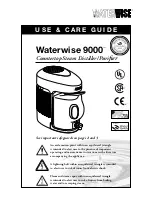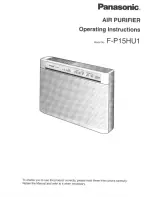
Final tasks
■
Re-fit all the dismantled parts.
■
Familiarize the operator with
the system.
Functional test for cooling
and heating modes
1. Remove the caps from the
valves.
2. Begin the commissioning
process by briefly opening the
blocking valves of the external
section until the manometer
displays a pressure of approx.
2 bar.
3. Use leak detection spray or
suitable devices to check that all
the connections are tight.
4. If no leaks are found, fully open
the stop valves by turning
them anti-clockwise using a
spanner. If leaks are found,
repair the faulty connection. It
is imperative that the vacuum
creation and drying steps are
repeated!
5. Switch off the main circuit
breaker or remove the fuse
(provided by the customer).
6. Use the remote control to
switch on the unit and select
the cooling mode, maximum
fan speed and lowest target
temperature.
7. Measure and record all
the required values in the
commissioning report and
check the safety functions.
8. Check the indoor unit
control system using the
functions described in the
chapter "Operation". Timer,
temperature setting, fan speeds
and switching to ventilation or
dehumidifying mode.
9. Check the correct function
of the condensation pipe by
pouring distilled water into the
condensation tray.
A bottle with a spout is
recommended for pouring the
water into the condensation
tray.
10. Switch the indoor unit to
cooling mode.
11. Check the correct function
and settings of all regulation,
control and safety devices
during the test run.
12. Check the control system in the
indoor unit using the functions
described in the manual.
Timer, temperature settings and
all mode settings.
13. Check the overheating,
outdoor, indoor, outlet and
vaporisation temperatures and
record the measured values in
the commissioning report.
14. Switch the indoor unit to
heating mode.
15. Check all the previously
described safety devices and
functions during the test run.
16. Enter the measured data in the
commissioning report.
17. Remove the pressure gauge.
Check that seals have been
fitted in the sealing caps.
pipe and subtract the boiling
point temperature reading on
the pressure gauge from the
measured temperature.
■
Record the measured
temperatures in the
commissioning report.
REMKO MD
26
Summary of Contents for MD 261
Page 2: ......
Page 31: ...Notes 31...







































